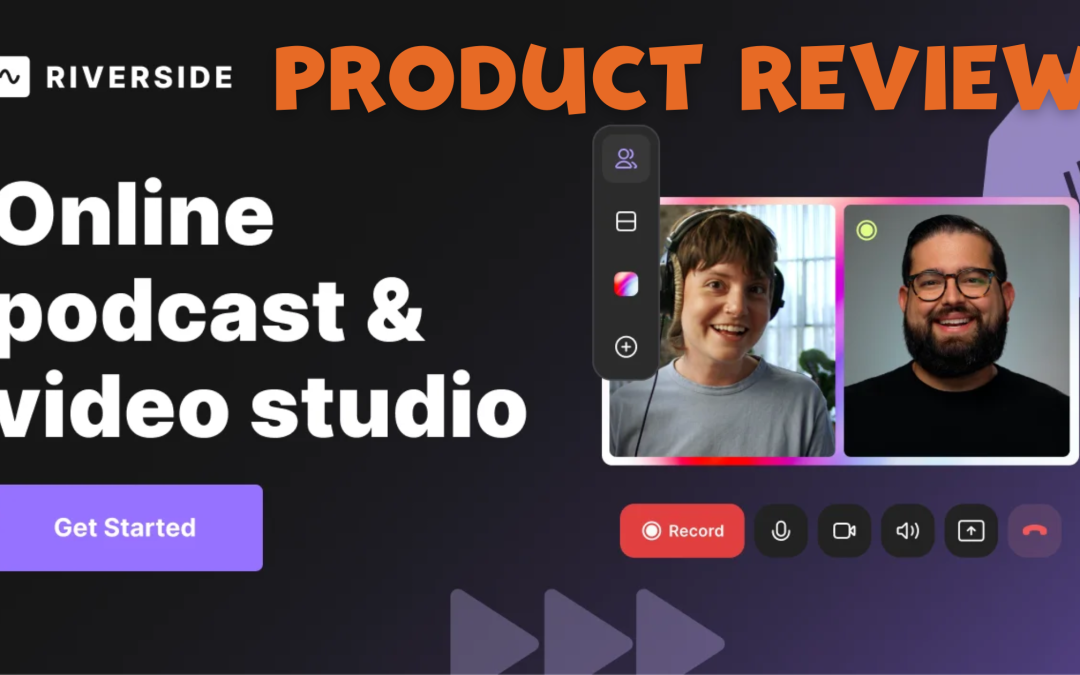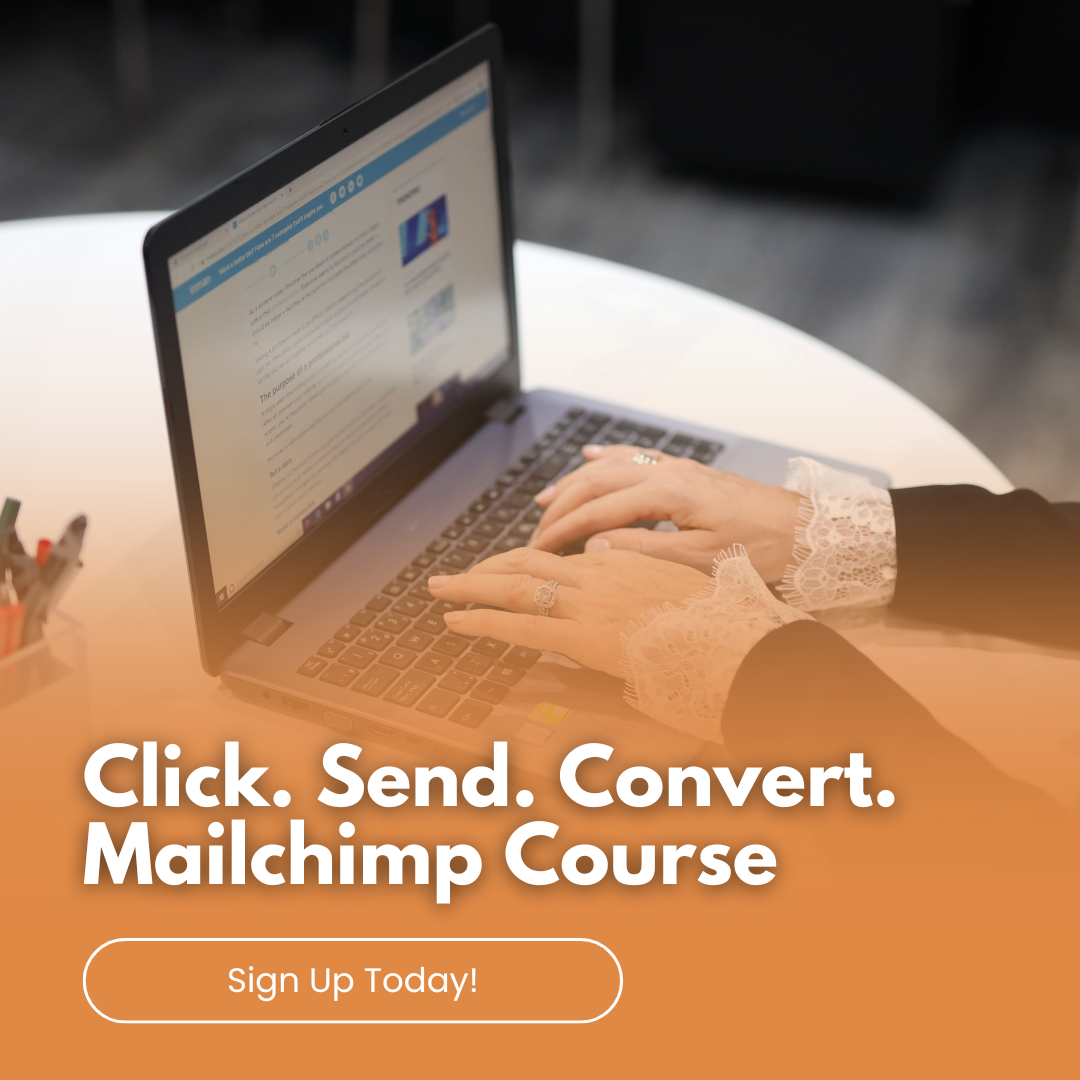
by Anne Clark | Jan 15, 2025 | Business
It’s a new year, folks, and that means it’s time for the annual “new year, new you” chant. But instead of tackling a juice cleanse (which no one really sticks to), why not cleanse your business systems instead? Yep, it’s time to dust off those spreadsheets, tackle the tangled mess of your software subscriptions, and make your operations as smooth as a kangaroo hopping along the beach.
This guide will show you how to audit your business systems with a little flair—and maybe even have a laugh along the way.
Why Auditing Your Business Systems is a Game-Changer
Let’s face it, running a small business can sometimes feel like wrestling a croc – chaotic and downright exhausting. But when your systems are running like a well-oiled machine, everything gets easier.
By auditing your business systems, you can:
-
Save time by cutting out useless apps.
-
Save money by ditching tools you’ve forgotten you’re paying for.
-
Create workflows that don’t feel like pulling teeth.
-
Lay a foundation for scaling up when your big break comes (because it’s coming, mate).
Step 1: Review Your Current Tools and Software
First up, grab a cuppa and list every bit of software or tool your business uses. From your accounting system to social media scheduling, take stock of the lot. Then ask yourself the hard questions:
-
Is this tool actually helping, or is it just collecting dust?
-
Does it integrate with other tools, or is it as stubborn as a toddler refusing veggies?
-
Are there cheaper alternatives?
Step 2: Analyse Your Processes
Next, take a good look at how your business runs. Map out workflows for sales, customer service, and admin tasks. Now, here’s the fun bit – find the clunky bits and fix them.
-
Is your team spending hours on manual tasks that could be automated?
-
Are there processes that make it feel like hard work?
Drawing a visual map of your processes (on a whiteboard, paper, or using free tools) can help you spot where things get bogged down. A smooth process means fewer headaches and more time for that mid-afternoon Tim Tam break.
Step 3: Check in on Team Roles and Responsibilities
Your team is like your footy team – everyone needs to know their position and play their part. If roles are unclear, confusion kicks in, and things can quickly go pear-shaped.
-
Does everyone on your team know what they’re supposed to be doing?
-
Do they have the tools and training to do their job well?
-
Are there any gaps in skills that could be filled with some quick upskilling?
Clear communication is key. Sit down with your team, shout them a coffee, and chat through what’s working and what’s not.
Step 4: Evaluate Your Customer Experience
If your customers are happy, your business will thrive. So, take a walk in your customers’ shoes (metaphorically, unless you’re in retail, then maybe literally).
-
Is your website easy to navigate, or does it feel like wandering through the bush without a compass?
-
Are your response times quick enough to keep customers smiling?
-
Are there pain points in the customer journey that need ironing out?
Customer feedback is gold, so send out a quick survey or check your Google Reviews to get an honest take. Then, use that feedback to make changes that make your customers go, “Wow, this is great!”
Step 5: Set Goals for Improvement
Once you’ve uncovered the good, the bad, and the downright ugly in your systems, set some clear goals to fix things up. Use the SMART framework:
-
Specific: “Fix the 3-day lag in responding to customer inquiries.”
-
Measurable: “Bring response times down to under 24 hours.”
-
Achievable: “Automate email responses using software like Autopilot.”
-
Relevant: “Improving response times will increase customer satisfaction.”
-
Time-bound: “Achieve this by the end of February.”
The more specific your goals, the easier they’ll be to achieve—and the more satisfying it’ll be to tick them off your list.
Step 6: Automate Like a Pro
Automation is like having an extra pair of hands that doesn’t need coffee breaks. Whether it’s email marketing, invoicing, or social media scheduling.
-
Use Mailchimp for email marketing—it’s user-friendly and saves a tonne of time.
-
Try Deputy for rostering and time tracking.
-
Explore Canva for creating graphics. Canva integrates with so many programs too.
Small automations can make a big difference to your workload and free you up to focus on the bigger picture.
Step 7: Keep Monitoring and Tweaking
Your business is a living, breathing thing—it changes over time. So, make it a habit to check in on your systems regularly. Set reminders for quarterly reviews, and don’t be afraid to make tweaks as needed. A small change now can save you heaps of time and money in the long run.
Make 2025 Your Best Year Yet
Auditing your business systems doesn’t have to be boring or overwhelming. You’ll have your operations humming in no time. Start your audit today, and make 2025 the year your business shines brighter.

by Anne Clark | Jan 3, 2025 | Business
For many of us, the email inbox has become a source of stress and anxiety. With messages pouring in constantly, it’s easy to feel overwhelmed by the sheer volume and the pressure to respond. If you’re struggling to manage your inbox effectively, don’t worry—you’re not alone. Here are some proven strategies to help you regain control, reduce anxiety, and transform your inbox from chaos into an organised, stress-free space.
1. Set Up Email Filters and Folders
One of the simplest ways to declutter your inbox is by creating filters and folders. These tools allow your email service to automatically sort messages based on predefined criteria. For example, newsletters can go straight to a “Promotions” folder, while client emails can land in a dedicated “Clients” folder. This reduces visual clutter and ensures important emails don’t get lost.
How to Set Filters:
- In Gmail: Use the search bar to create rules (e.g., “from:[sender]”) and apply filters like “Skip Inbox” or “Label as [folder name].”
- In Outlook: Use “Rules” under settings to automatically move emails into specific folders.
2. Embrace Inbox Zero
The Inbox Zero method encourages you to treat your inbox as a workspace rather than a storage space. The goal is to keep your inbox empty or close to it by dealing with emails promptly and archiving or deleting those that are no longer needed.
Steps to Implement Inbox Zero:
- Process emails daily.
- Archive or delete messages once addressed.
- Use your inbox only for actionable items.
By adopting this mindset, you’ll feel less burdened by the volume of emails and more in control of your communications.
3. Unsubscribe from Unnecessary Emails
Promotional emails and newsletters can quickly clutter your inbox. Take a few minutes to unsubscribe from those you no longer read or find valuable. Tools like Unroll.me or Clean Email make it easy to bulk unsubscribe and clean up your inbox.
Quick Tip: Before unsubscribing, consider whether the email provides value or aligns with your current interests. For newsletters you want to keep, create a “Read Later” folder to prevent them from clogging your primary inbox.
4. Set Dedicated Email Times
Constantly checking your email can be counterproductive and anxiety-inducing. Instead, designate specific times to check and respond to emails—for example, once in the morning, midday, and late afternoon. During these periods, focus solely on your inbox, and avoid multitasking.
Benefits of Email Scheduling:
- Reduces the compulsion to check emails constantly.
- Helps you stay focused on other tasks throughout the day.
5. Use Email Templates
For emails that require repetitive responses, creating templates can save time and reduce decision fatigue. Whether it’s a client inquiry or a meeting follow-up, having a pre-written template allows you to respond quickly and consistently.
How to Set Up Templates:
- Gmail: Enable “Templates” in settings and save frequently used responses.
- Outlook: Use “Quick Parts” to insert standardised text.
6. Follow the Two-Minute Rule
The two-minute rule is simple: if a task (in this case, responding to an email) can be completed in under two minutes, do it immediately. This approach prevents small tasks from piling up and overwhelming you later.
How It Helps:
- Keeps your inbox organised.
- Reduces procrastination and anxiety over unfinished tasks.
7. Utilise Email Management Tools
Several tools are designed to help manage inbox clutter and prioritise important messages. For example:
- Sanebox: Filters unimportant emails into a separate folder.
- Spark: Groups emails by category and highlights urgent ones.
- Superhuman: Offers AI-powered tools to streamline email management.
These tools are particularly useful for busy professionals who deal with a high volume of emails daily.
8. Encourage Clear Communication
Teach your team or colleagues to use clear subject lines and summarise their emails effectively. For example:
- Use descriptive subject lines (e.g., “Action Required: Budget Approval by Friday”).
- Include bullet points for clarity.
Clear communication reduces the time spent deciphering emails and ensures faster responses.
9. Regularly Archive Emails
Archiving emails is a great way to declutter your inbox without permanently deleting important messages. Set aside time each week to move older, inactive emails into an archive folder for safekeeping.
Pro Tip: Use the search function to quickly find archived emails when needed.
10. Delegate or Automate
For those who receive hundreds of emails daily, delegation and automation can be lifesavers. Consider hiring a virtual assistant to manage routine emails or set up automated replies for common queries.
Examples of Automation:
- Use auto-responders to acknowledge receipt of emails.
- Create rules for specific types of emails (e.g., invoices go directly to the finance folder).
11. Categorise with Colour Codes or Tags
Visual organisation can help you identify priority emails at a glance. Assign colours or tags to different categories, such as:
- Red for urgent emails.
- Green for financial correspondence.
- Blue for informational or FYI emails.
Many email platforms allow you to customise these visual markers for better inbox management.
12. Shift Your Mindset
Sometimes, the anxiety around email stems from a perceived obligation to respond immediately. Remind yourself that it’s okay to take your time to respond thoughtfully. You’re not obligated to be available 24/7.
Mindfulness Practice: Before opening your inbox, take a deep breath and centre yourself. Approach your emails with intention, not urgency.
13. Set Up Auto-Responders
Auto-responders can be especially helpful during busy periods. For example:
Example Message: “Thank you for your email. I’ll get back to you within 24 hours. If your message is urgent, please call me directly at [phone number].”
This sets expectations for response times and reduces anxiety for both you and the sender.
14. Teach Decision-Making Skills
When addressing emails, follow the 4 Ds of email management:
- Delete: Remove emails you don’t need.
- Delegate: Forward emails that someone else can handle.
- Do: Address emails that require quick action.
- Defer: Save emails requiring more time for later.
This approach streamlines your inbox management process and reduces decision fatigue.
15. Provide Emotional Support
Email anxiety often stems from fear of missing something important or making a mistake. Support yourself or your clients by normalising the idea that it’s okay not to respond immediately. Not every email requires an urgent reply.
Practical Tips:
- Remind yourself that your worth isn’t tied to your email productivity.
- Focus on progress, not perfection.
By implementing these strategies, you can transform your inbox into a manageable and stress-free workspace. Start with one or two changes and gradually adopt more as you grow comfortable. Remember, the goal is not to spend all day managing emails but to create a system that works for you—and lets you focus on what truly matters.

by Anne Clark | Dec 26, 2024 | Business
The holiday season is the perfect time to unwind, reflect, and get inspired for the year ahead. Whether you’re lounging on a beach, curled up by a fireplace, or stealing a quiet moment with a cup of tea, the right book can offer transformative insights to set you up for success. Here’s a curated list of 30 books to fuel your mindset, strategy, and creativity as you prepare for an epic business year in 2025.
Mindset & Personal Growth
- Atomic Habits by James Clear
Discover how small changes can lead to remarkable results in your personal and professional life.
- Daring Greatly by Brené Brown
Learn the power of vulnerability and how it can transform your relationships and leadership style.
- The Four Agreements by Don Miguel Ruiz
These timeless principles will help you cultivate inner peace and clarity in decision-making.
- Think Like a Monk by Jay Shetty
Tap into ancient wisdom to enhance your focus, gratitude, and purpose.
- You Are a Badass at Making Money by Jen Sincero
Shift your money mindset and unlock abundance with this no-nonsense guide.
- The Gifts of Imperfection by Brené Brown
Embrace authenticity and let go of perfectionism to lead with confidence.
- The Artist’s Way by Julia Cameron
Reignite your creativity with this iconic guide to overcoming blocks and nurturing your artistic spirit.
Leadership & Business Strategy
- Leaders Eat Last by Simon Sinek
Explore how great leaders create trust and foster collaboration within teams.
- Good to Great by Jim Collins
Understand what sets successful companies apart and how you can apply these principles to your own ventures.
- Drive by Daniel H. Pink
Learn what truly motivates people and how you can inspire your team to achieve their best.
- The Lean Startup by Eric Ries
A must-read for entrepreneurs looking to build sustainable businesses through innovation and agility.
- Radical Candor by Kim Scott
Master the art of giving and receiving feedback to create stronger, more effective teams.
- Traction by Gino Wickman
Learn how to run your business with a clear vision and proven systems for growth.
- No Rules Rules by Reed Hastings and Erin Meyer
Get a behind-the-scenes look at Netflix’s groundbreaking corporate culture and innovation strategies.
Marketing & Branding
- Building a StoryBrand by Donald Miller
Transform your messaging to captivate your audience and grow your business.
- This Is Marketing by Seth Godin
Gain insights into creating meaningful connections with your customers.
- Influence by Robert B. Cialdini
Understand the psychology of persuasion and how it can elevate your marketing strategies.
- The 1-Page Marketing Plan by Allan Dib
Simplify your marketing strategy and create actionable steps for success.
- Content Inc. by Joe Pulizzi
Learn how to build a powerful business by focusing on audience-first content marketing.
- Hooked by Nir Eyal
Dive into the science of creating products and services that keep customers coming back.
Productivity & Organisation
- Deep Work by Cal Newport
Master the skill of focused work in an increasingly distracted world.
- Essentialism by Greg McKeown
Prioritise what truly matters by eliminating the non-essential.
- Getting Things Done by David Allen
Learn actionable strategies to organise your tasks and maximise productivity.
- The 5 AM Club by Robin Sharma
Discover the habits of early risers and how to structure your day for success.
- Make Time by Jake Knapp and John Zeratsky
Find practical tips for carving out time for what truly matters.
Finance & Scaling Your Business
- Profit First by Mike Michalowicz
A game-changing approach to managing your business finances for sustainable growth.
- The E-Myth Revisited by Michael E. Gerber
Discover why many small businesses fail and how you can create systems for long-term success.
- Principles by Ray Dalio
Explore the principles that shaped one of the world’s most successful investors and leaders.
- Blue Ocean Strategy by W. Chan Kim & Renée Mauborgne
Learn how to create uncontested market spaces and make your competition irrelevant.
- Rich Dad Poor Dad by Robert T. Kiyosaki
Get timeless financial insights to improve your money management skills and entrepreneurial mindset.
How to Make the Most of This Reading List
- Set Your Intentions: Choose books that align with your current goals and challenges.
- Take Notes: Jot down key takeaways and actionable insights as you read.
- Create a Plan: Incorporate what you’ve learned into your 2025 business strategy.
- Share the Journey: Discuss your favourite reads with your team, peers, or business coach to deepen your understanding and spark new ideas.
📚Want a copy of this list, sign up here and I’ll send you a copy direct to your inbox. 📚
📚Want a copy of this list, sign up here and I’ll send you a copy direct to your inbox. 📚

by Anne Clark | Dec 3, 2024 | Business, Digital Marketing
As someone who juggles multiple projects and values efficiency, finding tools that make life easier is non-negotiable. Enter Riverside.fm, my go-to platform for recording and editing podcasts, webinars, and video content. From the moment I started using it, I knew this wasn’t just another recording tool—it’s a game-changer.
Top Features That Stand Out
- Crystal Clear Recording Quality
Riverside captures audio and video locally on each participant’s device before uploading it, meaning no more worrying about glitches or poor internet connections affecting the final product. The result? High-quality, professional-grade recordings every single time.
- User-Friendly Interface
The platform’s design is intuitive, making it perfect for tech-savvy pros and beginners alike. You can quickly set up a recording session, invite guests, and hit record without any fuss.
- Multi-Track Recording
Each participant’s audio and video are recorded on separate tracks. This is a lifesaver during editing because it allows me to fine-tune each person’s audio or video independently. No more struggling with overlapping dialogue or background noise that ruins the entire track.
- Magic Editor: The Ultimate Time Saver
Here’s where Riverside truly shines for me. The Magic Editor is like having an editing wizard on standby. With just a few clicks, you can trim unwanted segments, polish transitions, and create a professional-looking output—no advanced editing skills required. It saves me hours of work and delivers a final product that’s ready to upload.
- Transcriptions Made Easy
For anyone repurposing content into blogs or social media posts, Riverside’s automatic transcription feature is a blessing. It’s accurate, easy to export, and saves tons of time.
Why I Love It
Riverside has made my content creation process faster, easier, and more enjoyable. The days of dreading post-production editing are over. With its combination of powerful features and seamless functionality, I can focus on creating great content without being bogged down by the technical side of things.
Perfect for Any Creator
Whether you’re a seasoned podcaster, a business owner recording webinars, or someone just starting their content journey, Riverside is the ultimate tool to elevate your workflow. It’s more than a platform—it’s a partner in making your creative projects a success.
If you’re on the fence about trying Riverside, jump in. It’s worth every cent for the time, frustration, and effort it saves. It’s not just a recording tool—it’s a complete content creation solution that keeps me coming back for more. Learn more about Riverside here.

by Anne Clark | Nov 29, 2024 | Business, Kajabi
Online entrepreneurs are continuously seeking for ways to simplify their companies and provide outstanding value to their clients in the fast-paced digital environment of today. Now enter Kajabi, the best all-in-one platform meant to streamline the creation, marketing, and sales of your web products. Here are 10 reasons Kajabi is the game-changer you need if you are an entrepreneur trying to expand your company without balancing several tools.
One all-in-one solution
Kajabi creates courses, manages your email marketing, builds your sales funnels, and replaces the need for separate tools to run your website. It saves time, money, and the trouble of juggling several subscriptions by deftly combining all these capabilities into one simple platform.
Simple Guide Creation Tools
Creating and launching an online course has never been easier using Kajabi’s drag-and-drop course builder. Without technical knowledge, you can arrange your material, include videos, design quizzes, and post downloadable materials.
Expert Internet Design
Kajabi lets you design a fantastic, branded website without using any coding. Select from lovely designs and personalise them to fit your brand, so making sure your company is unique online.
Strong email marketing tools built-in in Built-In Email Marketing Kajabi let you segment your audience, create automated email campaigns, and track performance data. You now have all of this right here in one location instead of a third-party email service.
Strong Sales Funnels
Built-in pipelines from Kajabi enable you to design high-converting sales funnels guiding your audience from lead generation to purchase. Kajabi makes it easy to set up and monitor the success of your funnel regardless of webinars, opt-ins, or new product introductions.
Flawless integration of payments
Kajabi lets you easily accept payments worldwide by connecting with well-known payment providers including Stripe and PayPal. You can also track income straight from the platform, handle subscriptions, and create payment plans.
Member Associations
Want a vibrant community built? Kajabi lets you design interactive, private member areas where you might interact with your audience, provide special materials, and foster loyalty.
Total Analytics
The analytics dashboard of Kajabi provides real-time understanding of the state of your company. Track sales, email open rates, client interaction, and more to base decisions on data that expand your company.
Hosting Unlimited
Give up the headache of handling third-party hosting systems or storage restrictions. Kajabi guarantees your content is always available to your audience by providing unlimited video hosting and bandwidth.
Constant Updates and Assistance
Constantly innovating, Kajabi adds tools and new features to keep ahead in the digital scene. Besides, their first-rate customer service makes you never alone when you need assistance.
Why You Need a Kajabi Consultant
Although Kajabi is a great platform, setting it up to fully utilise its possibilities can be daunting, particularly if you are new to online business. This is where a Kajabi specialist is most useful. From designing a professional website to building flawless sales funnels and automations, a professional can help you maximise Kajabi and accelerate your success.
All set to propel your company towards its next level? I’m here to help if you’re ready to use Kajabi’s power but don’t know where to start. Being a Kajabi specialist will help you to set up your platform, personalise it to fit your requirements, and guarantee it runs easily for your company. Let’s design a system that provides outcomes and supports your development. Get in touch right now to begin using Kajabi to help your company flourish.

by Anne Clark | Nov 25, 2024 | Business
Taking some time off over the holidays to relax, rejuvenate, and plan for the new year. Here is a list of 20 must-read business books perfect for entrepreneurs, business leaders, and professionals seeking to be inspired, educated and upskill to tackle 2025 with confidence. If you or someone you care about is looking for holiday gift ideas, now is the time to share this list and start organising your reading list.
Leadership and Personal Development
- Atomic Habits by James Clear
A game-changer for those seeking to build better habits and break bad ones. Learn actionable strategies to improve daily routines and achieve your goals in 2025.
- Dare to Lead by Brené Brown
Perfect for leaders who want to lead with vulnerability, courage, and authenticity.
- The 7 Habits of Highly Effective People by Stephen R. Covey
A timeless classic that provides a framework for personal and professional effectiveness.
- Drive: The Surprising Truth About What Motivates Us by Daniel H. Pink
Understand what truly motivates people and how to harness that for personal and business success.
- Grit by Angela Duckworth
Discover how perseverance and passion can help you achieve extraordinary things in 2025.
Marketing and Sales
- Building a StoryBrand by Donald Miller
Learn how to clarify your message to engage customers and grow your business.
- Influence: The Psychology of Persuasion by Robert B. Cialdini
Explore the science behind why people say “yes” and how to use that knowledge ethically.
- Sell Like Crazy by Sabri Suby
An Australian-based guide packed with practical, proven strategies to skyrocket your sales.
- Content Inc. by Joe Pulizzi
A guide for content creators and entrepreneurs looking to grow their audience and turn passion into profit.
- The Lean Startup by Eric Ries
For anyone planning to launch a business or pivot in 2025, this book outlines how to do it effectively with minimal risk.
Business Strategy
- Good to Great by Jim Collins
Discover what separates good companies from truly great ones and apply these lessons to your business.
- Blue Ocean Strategy by W. Chan Kim and Renée Mauborgne
Learn how to create uncontested market space and make the competition irrelevant.
- Measure What Matters by John Doerr
Dive into the power of Objectives and Key Results (OKRs) to drive focus and accountability.
- The Hard Thing About Hard Things by Ben Horowitz
Honest insights on building and managing a business when there are no easy answers.
- Zero to One by Peter Thiel
For innovators and startup founders, this book challenges you to think differently and build something truly unique.
Mindset and Productivity
- Deep Work by Cal Newport
Learn how to focus without distraction and achieve peak productivity.
- Essentialism: The Disciplined Pursuit of Less by Greg McKeown
Discover the art of focusing on what truly matters and eliminating the non-essential.
- Think Again by Adam Grant
A guide to embracing the power of rethinking and unlearning in a rapidly changing world.
- Mindset: The New Psychology of Success by Carol S. Dweck
Uncover the power of a growth mindset and how it can transform your approach to challenges in 2025.
- The One Thing by Gary Keller
Simplify your focus to achieve extraordinary results in your personal and professional life.
The holiday season is not just about relaxation—it’s a time to reflect and prepare for the exciting opportunities ahead. These books cover a wide range of topics, from leadership to marketing and mindset, ensuring you’re equipped with fresh perspectives and actionable strategies for 2025.
Which of these will you start with? Share your favourites in the comments below or let us know if there’s a must-read book that we missed!















